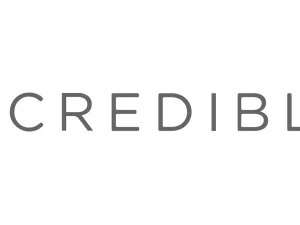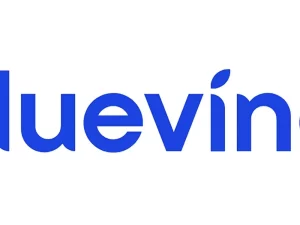Applying for a mortgage can seem like a daunting process, but with proper preparation and understanding of the steps involved, it can be a relatively smooth experience. Here is a detailed guide on how to apply for a mortgage:
1. Determine your budget and financial readiness:
Before applying for a mortgage, it’s important to assess your financial situation and determine how much you can afford to borrow and comfortably repay each month. Start by evaluating your income, expenses, and existing debts. Consider factors such as your credit score, savings for a down payment, and any additional costs associated with homeownership, such as property taxes and insurance. This evaluation will help you establish a realistic budget and narrow down your options.
2. Research and choose a lender:
The next step is to shop around and research different lenders to find one that offers competitive rates, terms, and excellent customer service. You can approach banks, credit unions, mortgage brokers, or online lenders. Take into account factors such as their reputation, customer reviews, and the range of mortgage products they offer. Obtain quotes and compare offers from multiple lenders to ensure you get the best possible deal.
3. Gather necessary documents:
Lenders require specific documents to verify your financial information during the mortgage application process. Gathering these documents in advance will streamline the application process. Common documents you may need include:
– Proof of identity: This can be a passport, driver’s license, or other government-issued identification.
– Proof of income: Lenders typically require recent pay stubs, W-2 forms, or tax returns for self-employed individuals.
– Bank statements: Provide statements from the most recent two to three months to demonstrate your financial stability.
– Employment verification: Be prepared to provide contact information for your current employer.
– Proof of assets: Include statements for any savings accounts, investments, or other assets that can contribute to your down payment or serve as reserves.
– Credit history: Obtain a copy of your credit report and review it for accuracy. Lenders will use this information to assess your creditworthiness.
4. Prequalification or preapproval:
Consider getting prequalified or preapproved for a mortgage before you start house hunting. Prequalification is an informal assessment based on basic financial information you provide, giving you an estimate of how much you may be eligible to borrow. Preapproval is a more rigorous process involving a thorough evaluation of your financial documents by the lender. Preapproval strengthens your position as a serious buyer and gives you a clearer understanding of your borrowing capacity.
5. Choose the right mortgage type:
There are various mortgage options available, and it’s important to choose the one that best suits your needs and financial situation. Some common types of mortgages include:
– Fixed-rate mortgages (FRMs): These mortgages have a fixed interest rate for the entire loan term, providing borrowers with stability and predictable payments.
– Adjustable-rate mortgages (ARMs): ARMs offer an initial fixed interest rate for a specified period, after which the rate adjusts periodically based on market conditions.
– Government-backed loans: These loans, including FHA, VA, and USDA loans, are insured or guaranteed by the government, allowing borrowers with lower down payments or less-than-perfect credit to qualify.
– Jumbo loans: Jumbo loans are used for high-value properties that exceed the conforming loan limits set by Fannie Mae and Freddie Mac.
Research and discuss with your lender to determine the best mortgage type for your specific needs and financial situation. Consider factors such as interest rates, loan terms, down payment requirements, and potential closing costs.
6. Complete the application:
Once you’ve selected a lender and mortgage type, it’s time to complete the official mortgage application. This can typically be done online or in-person at a branch office. The application will require you to provide accurate and detailed information about your financial situation, employment history, assets, and any other required details. Take the time to review the application carefully before submission to ensure accuracy.
7. Underwriting process:
After submitting your application, the lender will initiate the underwriting process. This involves a thorough review of your financial information, creditworthiness, and the property you intend to purchase. The lender may request additional documentation or clarification during this stage. They will assess your risk profile and determine whether to approve your loan and at what terms. It’s important to promptly respond to any requests for additional information to avoid delays in the process.
8. Property appraisal and inspection:
As part of the mortgage process, the lender will typically require an appraisal to ensure the property’s value aligns with the loan amount. The appraisal is conducted by a professional appraiser who assesses the property’s condition and compares it to similar properties in the area. Additionally, the lender may recommend or require a home inspection to identify any potential issues with the property. These steps are essential to protect both the borrower and the lender.
9. Closing the loan:
If the underwriting process is successful, and the property appraisal and inspection are satisfactory, you will move towards closing the loan. Closing involves signing the final loan documents, paying any remaining closing costs and fees, and transferring ownership of the property. This is usually done at a title company or attorney’s office. Review all documents carefully before signing and ask any questions you may have. It’s important to have a clear understanding of the terms and conditions of the loan before finalizing the process.
10. Repayment and homeownership:
Once the loan is closed, you will begin making regular mortgage payments according to the agreed-upon terms. Ensure you understand the repayment schedule and have a plan in place to meet your financial obligations. It’s essential to budget effectively, track your expenses, and stay on top of your mortgage payments to protect your investment and maintain a good credit history.
Remember, the mortgage application process can vary slightly depending on the lender and your specific circumstances. Working with a knowledgeable loan officer or mortgage broker can help guide you through the process and address any concerns or questions you may have along the way. They can provide personalized advice based on your financial situation and help you navigate the intricacies of the mortgage application process.










